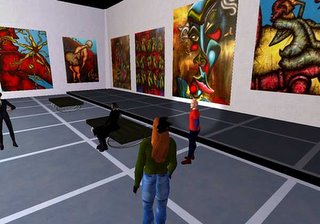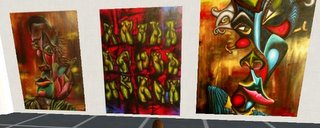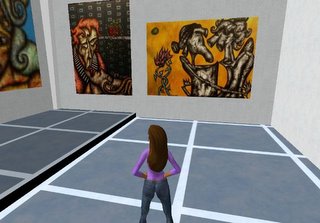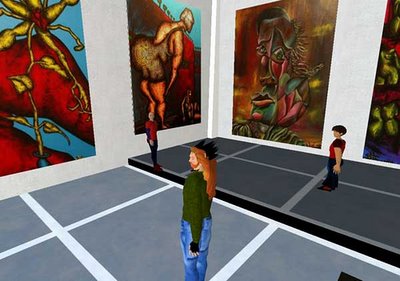
If we lie next to one another

ATLANTA, Georgia (CNN) - James Brown, the legendary R&B belter, a singer and songwriter who created a foundation for funk and provided the roots of rap, a man of many nicknames but a talent that can only be described as one of a kind, is dead.
Brown died early Monday at Atlanta's Emory Crawford Long Hospital of congestive heart failure, his agent said. He was 73.
"The most difficult thing is for me to stand here without him. We were a team," Charles Bobbit, Brown's personal manager, told reporters Monday. Pausing to fight back tears, Bobbit said he was at Brown's bedside when he died. Brown told him, "I'm going away tonight." Then he took three long, quiet breaths, and closed his eyes, Bobbit said. Brown was in Atlanta for a dental appointment when he fell ill and was admitted to the hospital over the weekend for pneumonia. "It appears what happened is that he did die of a heart attack as a result of his pneumonia," the singer's agent Frank Copsidas told CNN Radio.
Brown -- known variously as "the Godfather of Soul," "The Hardest Working Man in Show Business," "Soul Brother Number One" and "Mr. Dynamite" (and often introduced as all of the above) -- was known for his elastic dance moves, razor-sharp musicianship and all-stops-out performances.
He was, literally, an impossible act to follow: The Rolling Stones were said to have been terrified to come on after Brown in "The T.A.M.I. Show," a 1964 concert that appeared on film the next year. ("Nobody could follow me," Brown told "T.A.M.I. Show" director Steve Binder, according to a Los Angeles Times article.) Brown's performance in that show even earned an ovation from the backing band.
"You have the Rolling Stones on the same stage, all of the important rock acts of the day, doing their best -- and James Brown comes out and destroys them," producer Rick Rubin wrote in Rolling Stone.
His influence was broad and deep. He was a soul innovator, bringing a churchy rawness to R&B with his early hits "Please, Please, Please" and "Think." He essentially created funk with mid-'60s songs such as "Papa's Got a Brand New Bag," "I Got You (I Feel Good)" and "Cold Sweat." His grooves were sampled by rappers and hip-hop artists.
He was tough on his own backing band, the Famous Flames -- which included saxophonist Maceo Parker, guitarist Jimmy Nolen and drummer Clyde Stubblefield -- famously fining them if they missed a cue. They even walked out on him in 1969; Brown simply recruited a new band, which included bassist Bootsy Collins. (Many of the Flames later returned; they were renamed the J.B.'s.)
He provided the ground that much of black music -- much of pop music -- stands on. "James presented obviously the best grooves," rapper Chuck D of Public Enemy once told The Associated Press. "To this day, there has been no one near as funky. No one's coming even close."
Despite much-publicized personal problems that included a rap sheet and drug troubles, he also was a community leader. In the 1960s, he was a voice for calm during a period of urban riots; J. Anthony Lukas' book on Boston race relations, "Common Ground," notes that a 1968 Brown performance the day after the Rev. Martin Luther King Jr.'s assassination helped keep the Massachusetts city from exploding. Later, dismayed by the school shootings of the late '90s, he spoke out against violence in schools, even writing a song, "Killing's Out and School's In."
"We need to protect the kids by giving them something to do,". [It's about] making them interested, making them love mom and dad more, love the family more, love themselves more and love their school. So there won't have to be killing in school."
'Superhuman determination'
James Brown was born on May 3, 1933, in Barnwell, South Carolina. His early years were rough. Abandoned by his immediate family, he was taken in by friends and relatives and grew up in an "ill-repute area" of Augusta, Georgia, he once said. He shined shoes and danced for change, and he also served time in a reform school for breaking into cars, rescued by the family of friend Bobby Byrd.
Byrd invited Brown to join his group, the Gospel Starlighters, which later changed its name to the Flames and then the Famous Flames. The group was signed to King Records and released its song "Please, Please, Please" in early 1956. The song hit the R&B Top 10 and the group worked it hard, touring the "chitlin circuit" -- as the series of African-American clubs and theaters was called -- incessantly.
"What made Brown succeed where hundreds of others failed was his superhuman determination, working the chitlin circuit to death, sharpening his band, and keeping an eye on new trends," Richie Unterberger wrote on Allmusic.com.
A second hit, "Try Me," gave the group staying power, and from there it was hit after hit: "Think," "This Old Heart," "Bewildered," "Lost Someone," "Night Train," "Prisoner of Love." Brown eventually scored more than 50 Top 10 hits on the R&B charts. Seventeen hit No. 1.
Despite the occasional pop hit, crossover stardom eluded him until 1963, when "Live at the Apollo" -- still considered one of the great live albums of all time -- hit No. 2 on Billboard's album chart. In 1965, Brown hit the pop Top 10 with the groundbreaking "Papa's Got a Brand New Bag," a song that incorporated the intricate start-and-stop rhythms that would come to define funk, and his mainstream stardom was sealed.
Brown's music was bold: 1968's "Say It Loud (I'm Black and I'm Proud)" was a defiant statement of black pride; 1970's "Get Up (I Feel Like Being Like A) Sex Machine" was blatantly sexual; 1971's "Hot Pants" leering. His sound was unlike anything on the charts and was copied by many artists, including Sly and the Family Stone and Parliament -- who, in turn, gave it their own spin.
Influence on disco, hip-hop, rap
Brown went into eclipse in the mid-'70s. His 1974 song "The Payback" was his last Top 40 hit for 11 years, and even his appearances on the R&B/black music charts were irregular. He returned to the Top 10 with "Living in America," the theme from "Rocky IV," in 1985, but it was his last hurrah on the pop chart.
Brown also was plagued by personal problems. In the late '80s he was in the news for being accused of assault and battery by his then-wife. In 1988, high on PCP, he led police on a chase through two states before officers shot out the tires of his truck. He received a six-year prison sentence, serving 15 months in prison and 10 months in a work release program before being paroled in 1991, according to the AP.
But his musical influence was undeniable. He was part of the first group of artists inducted into the Rock and Roll Hall of Fame in 1986. He won Grammys for "Papa's Got a Brand New Bag" and "Living in America." He received a Kennedy Center honor in 2003.
He knew what he'd accomplished. "Disco is James Brown, hip-hop is James Brown, rap is James Brown; you know what I'm saying? You hear all the rappers, 90 percent of their music is me," he told the AP in 2003.
Brown's traditional performance close -- wailing, falling to his knees, being covered with a cape, led almost off stage, still singing quietly, only to rise again, returned to the center, bringing the screaming crowd to its feet -- is indelible. It suggested nothing short of a life force, one that lives on in his many followers. Which was what James Brown hoped for.
"I would like to pass on the want to do something," he told CNN in 2000. "The need is there. Good lyrics are good things, but I would like to pass on that drive, that vigorous undying determination." (Copyright 2006 CNN and AP)
--> Source : http://www.cnn.com
--> James Brown Website
--> James Brown on Wikipedia





 Ben, Servant, Yuval
Ben, Servant, Yuval
. Gio, Servant, Ben, Yuval
Gio, Servant, Ben, Yuval
.
 Ann
Ann
.
.
 Ginger, Yuval, Gio, Ben
Ginger, Yuval, Gio, Ben
The Artloft gallery : Owlet(221,58)
.
More photos and description on InTheGrid's Blog
.
Lowbrow art, also known as pop surrealism, is an art movement that originated in underground comics, hod rod street culture and other California subcultures. "The virtual world of Second Life, surreal in its own right, provides a perfect 'white wall' for exploring the contrast of alternate realities that are the product of marginalized, yet soon-to-become-mainstream, social structures," says Ishtvan Pippen, the owner of The Art Loft.
The Art Loft is a popular gallery in the virtual world of Second Life. It was founded by artist Esch Snoats with the mission of promoting real art in a virtual world. In December 2006, Esch moved on to working full time as an artist and handed off the reins of the Art Loft to Ishtvan Pippen.
The gallery is always looking for talented artists who want to exhibit their work in The Art Loft. To apply please send a brief artist statement and a link to your portfolio to Ishtvan Pippen at mailto:ishtvan@keenag.com. Please submit your artist statement in ordinary text format, and send only a link to your website portfolio. Otherwise your email might get filtered out.
To purchase real-world originals or prints of the exhibiting artists, please contact Ishtvan Pippen at mailto:ishtvan@keenag.com. To purchase virtual copies of our artists' work in Second Life please visit the gallery at Owlet(221,58).
.
Events:
Current:
Ben Heine "erotico fantastico burlesque" paintings. Opening December 15, 2006. 2 to 4 PM SL time.
Future:
Patrick Auletto Opening December 29, 2006. 6 to 8 PM SL time.
Eric Luden Opening January 7, 2006. 6 to 8 PM SL time.
Past:
Laszlo Wombat paintings Opening November 1
BD Gilmour photography Opening September 15
.
-->This text originally appeared on Keenag (Keenag is the lowbrow art gallery of Second Life. It started as a series of exhibits in The Art Loft, a popular artist-run space in Second Life. On December 29, 2006, Keenag is inagurating its new space adjacent to The Art Loft, becoming the first independent Second Life gallery focused exclusively on lowbrow art. )